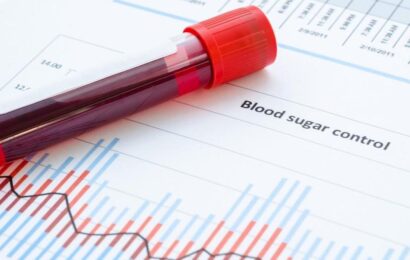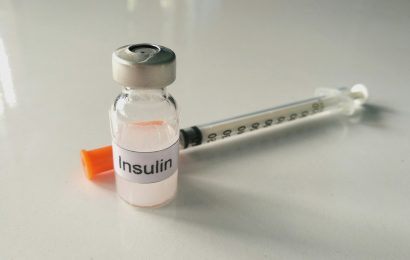Ketones, ketosis, ketoacidosis, DKA…these are words that you’ve probably heard at one point or another, and you might be wondering what they mean and if you need to worry about them at all, especially if you have diabetes. This week, we’ll explore the mysterious world of ketones, including if and how they may affect you.
Ketones — what are they?
Ketones are a type of acid that the body can form if there’s not enough carbohydrate to be burned for energy (yes, you do need carbs for fuel). Without enough carb, the body turns to another energy source: fat. Ketones are made in the liver from fat breakdown. This is called ketogenesis.
People who don’t have diabetes can form ketones. This might occur if a person does extreme exercise, has an eating disorder, is fasting (not eating), or is following a low-carbohydrate diet. This is called ketosis and it’s a normal response to starvation.
In a person who has diabetes, ketones form for the same reason (not enough carb for energy), but this often occurs because there isn’t enough insulin available to help move carb (in the form of glucose) from the bloodstream to the cells to be used for energy. Again, the body scrambles to find an alternate fuel source in the form of fat.
You might be thinking that it’s a good thing to burn fat for fuel. However, for someone who has diabetes, ketosis can quickly become dangerous if it occurs due to a continued lack of insulin (the presence of ketones along with “normal” blood sugar levels is not necessarily a cause for concern). In the absence of insulin (which can occur if someone doesn’t take their insulin or perhaps uses an insulin pump and the pump has a malfunction, for example), fat cells continue to release fat into the circulation; the liver then continues to churn out ketones. Remember that ketones are acids. These ketones lower the pH (a measure of acidity) of the blood, making it too acidic and potentially leading to a very dangerous and possibly life-threatening situation.
Diabetic ketoacidosis (DKA)
People who have Type 1 diabetes are at risk for DKA, and, less commonly, so are people with Type 2 diabetes. This doesn’t mean they will get DKA — they just need to be sure to take their insulin as prescribed and follow their treatment plan.
DKA is a very serious medical condition that requires immediate attention. As ketone levels climb in the blood, the body becomes more “acidic.” Normally, the body stays at a certain pH. With DKA, the pH is lowered, leading to a state of metabolic acidosis. As I mentioned earlier, DKA can occur in the absence of sufficient insulin. In fact, DKA is sometimes the first symptom that a person with Type 1 diabetes has — before they’re actually diagnosed. But it can also occur as a result of a severe infection, illness, or dehydration, too. If DKA is not treated, it can lead to coma and even death.
Symptoms of DKA
DKA can come on quickly (often within 24 hours), so it’s important to know the signs and symptoms. These include:
• Excessive thirst
• Frequent urination
• Nausea and vomiting
• Abdominal pain
• Confusion
• Weakness and fatigue
• Shortness of breath
• Fruity-smelling breath
In addition to the above symptoms, you will likely have high blood sugar levels (above 250 mg/dl) and positive urine ketones. If your blood sugar levels are running high and you have ketones in your urine, call your doctor right away. If you have any of the above symptoms, head to your local emergency room, as you need to be treated immediately.
DKA is treated in the hospital with a combination of fluids, electrolytes, and insulin, with the immediate goal of getting your blood chemistry back into a safe range. Depending on the cause of DKA, you may need antibiotics or other types of treatment, as well.
Testing for ketones
Talk with your doctor or diabetes educator about testing for ketones. If you have Type 1 diabetes, you need to know how to do this. Most people who have Type 2 diabetes don’t need to check for ketones, since DKA is rare in this group. However, you may, particularly if you take both mealtime (fast-acting) and long-acting insulin. It’s best to talk with your doctor or diabetes educator to find out.
There are two ways to test for ketones:
• Using urine ketone strips
• Using a meter that checks for blood ketones
Urine ketone strips are more commonly used. You can purchase a bottle or box of these without a prescription at your local pharmacy. The strips are easy to use, and directions are provided on the package. The result may be negative, or may show trace, small, moderate, or large amounts of ketones. Typically, you should call your doctor if you have moderate or large amounts of ketones in your urine.
Some blood glucose meters have the ability of measuring ketones in the blood. If you have one of these meters, you will need to use ketone test strips, not your blood glucose test strips. The meter’s user’s manual will provide instructions on how to test your blood for ketones and how to interpret the results.
When to test for ketones
It’s a good idea to test for ketones when:
• Your blood sugar is greater than 250 for two checks in a row.
• You are sick, have an infection, or have an injury.
• You are planning to exercise and your blood sugar is above 250.
• You are pregnant. You should check for ketones every morning before you eat and when your blood sugar is over 250.
Again, talk with your doctor so that you’re clear on when the best times are for you to check for ketones.
Preventing DKA
Prevention is always the best policy when it comes to DKA, and involves:
• Taking your insulin as prescribed. If you don’t think your doses are correct, check with your doctor or diabetes educator.
• Following the other aspects of your diabetes treatment plan, including your meal plan and exercise plan.
• Checking your blood sugar regularly and more often if you are sick, injured, or exercising.
• You’ll need to check your blood sugar frequently, too, if you use an insulin pump. Also, if you wear a pump, check your tubing for air bubbles, insulin leaks, and any other signs that insulin delivery has been interrupted.
• Making sure insulin hasn’t expired or “gone bad” from being kept in a hot or cold environment.
• Keeping your blood sugars and HbA1c within your target range.
Want to learn more about ketones in diabetes? Read “What Are Ketones In Urine?” and “Getting to Know Ketones,” then test your knowledge with the quiz “How Much Do You Know About Ketones?”





